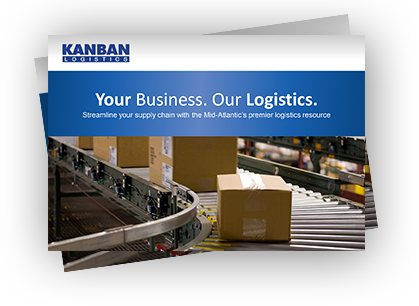If you have products coming into the U.S. on shipping containers, a logical question you might have is “what do I do with them once they reach the port?” The process starts with drayage.
What is drayage?
Drayage is the process of transporting a shipping container over the road from a port (e.g., a seaport or rail terminal) to its destination (e.g., a warehouse). This process typically covers short distances using drayage trucks and chassis.
Drayage can also refer to this process in reverse: putting items from a warehouse into a container and then transporting that container over the road to a port. Either way, drayage is often performed by third-party logistics (3PL) providers using their own – or outsourced – equipment.
Key considerations when looking for a drayage provider

While the process may seem straightforward, there are many variables that can make drayage both complicated and costly. To move your product efficiently and avoid unnecessary fees, you’ll need to partner with a drayage provider that covers the following bases.
Avoiding demurrage. Once your container arrives at the port (or rail terminal), you are given a certain amount of ‘free days’ by the steamship line to get the container off of the port. If your container has not been moved off the port when that free time expires, you will be charged a ‘demurrage’ fee by the steamship line for every day that the container remains unmoved.
To avoid demurrage, your 3PL provider should have experience picking up containers at your chosen port. At some ports, for example, the wait times for trucks to even enter the port can be several hours. Your 3PL will need to understand such challenges and have experience navigating them. To understand a prospective 3PL’s success at avoiding demurrage, simply ask for this information (e.g., “what percentage of your containers incurred a demurrage fee over the last 6 months?”). The provider should tell you.
Avoiding detention. Once you move the container off port, you are again given a number of free days – this time to return it empty. The steamship lines own these containers after all, and they want them back for the next load. If you don’t return the container during this free-day period, you will be charged a ‘detention’ fee for each additional day.
Many warehousing providers also provide drayage services. When you partner with the same company for both services, your provider can ensure that the container is received, unloaded at the warehouse, and returned to the port within the free-day period. It is a much easier to accomplish this with one company overseeing the entire process. A one-provider solution also eliminates the paperwork and inventory management headaches associated with multiple handoffs.
Palletizing product. In many cases, your product will be floor loaded into your container overseas. Upon arrival, it is then up to you to palletize this product before it can be stored in a warehouse or delivered to a retailer. Your 3PL can do this for you, while (typically) providing the necessary pallets, shrink wrapping and labor needed to get the job done right.
Cross docking. Sometimes, however, you may want to skip long-term warehousing and get your products on the move quickly. With cross docking services, your 3PL can unload your container, palletize your products, and store them temporarily in a warehouse as they await distribution. Some 3PLs can even handle the last-mile transportation for you – further reducing the need for multiple providers.
Product segregation and transloading. Let’s say that you have 5 containers coming into port, and the contents of each container are heading to different destinations. Your 3PL can receive and palletize your products, segregate them according to destination within the warehouse, and load them onto separate trucks (or rail cars). This process is called transloading and it is another way of skipping long-term warehousing and getting goods on the move quickly.
The same concept can apply if you have one container with products heading to different destinations. The products can be segregated and loaded just like the 5-container example above.
Turn to Kanban Logistics for a one-provider solution
If you’re shipping containers by sea or rail into the East Coast, Kanban Logistics has the drayage capabilities to take care of the rest. We have over 1 million square feet of warehousing space in Eastern North Carolina – close to the ports of Norfolk and Wilmington and within one-day reach of 70% of the U.S. population. We also have a transload yard and rail siding to handle your rail shipments onsite. To learn more about our drayage and East Coast logistics solutions, contact Kanban today.
Never Miss a Blog Post
Join our email list to receive new posts in your inbox. We will never spam you. Opt out anytime.
Blog Post Categories
- Outsourcing 3PL (71)
- Warehousing (71)
- North Carolina (51)
- east coast logistics (47)
- manufacturing logistics (26)
- Food Logistics (19)
- Fulfillment (18)
- CSX Carolina Connector (17)
- Miscellaneous (14)
- Free Trade Zone (FTZ) (11)
- Intermodal (11)
- FTZ / Free Trade Zones (10)
- Port of Virginia (10)
- Rail Siding (10)
- Cross Docking (7)
- Kitting (5)
- Aerospace (3)
- Kanban News (2)
- Pharmaceutical (2)
- QVC Rework Services (2)
- COO (1)
- flexible (1)
- operations (1)
- scale (1)
- scott freeman (1)




